Top ratings
Get free trial access now Try first, then study!

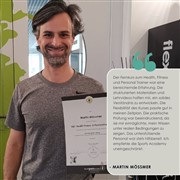

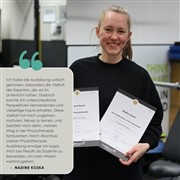
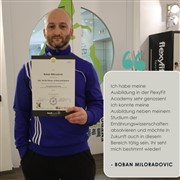

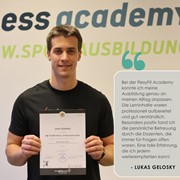
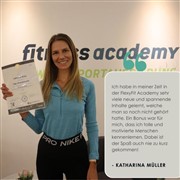
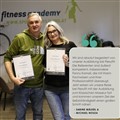
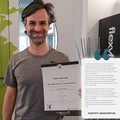

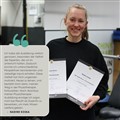
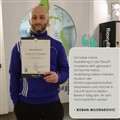
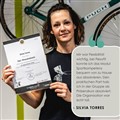
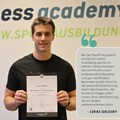
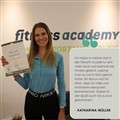

starting at € 3.090,- | one2one
» Our Course Packages
Important informations
Recognized & Certified
Our graduates, partners & friends say
Our team will be happy to advise you at any time by phone, chat or in person
Do you want even more flexibility in the design of your Functional Trainer training? Then the One2One option is the right choice for you.
With the One2One learning option, you can decide flexibly when, where and with which Flexyfit expert you would like to complete your training. This allows you to design your training entirely according to your wishes and needs. The advantage of this is that the specialist expert can focus his or her attention entirely on you, allowing you to better internalize the content of the functional trainer module, such as HIT training, bodyweight, Olympic weightlifting, etc.
During the course, you will learn all about the various exercises and how to perform them, as well as the optimal functional training design. Thanks to the practice-oriented content, you will become a real expert in functional training and can then work as a Functional Strength Master Trainer.
Incidentally, this course can be ideally combined with other courses in the One2One variant, such as fitness trainer, personal trainer or medical sports supervisor .
Extent of learning
648 E
EQF level
The training is based on EQF level 4 »
Course start
Possible immediately
Learning variant
One2One

Regardless of whether you use the functional trainer course as a stand-alone course or complete it as an extension to your fitness trainer course - we will make you completely fit for working with experienced athletes. Learn movement sequences with the help of small equipment such as kettlebells, battleropes, slam balls and much more.
Functional training trains several muscle groups at the same time. This not only saves time compared to conventional equipment training, but also trains motor skills and stabilizes joints. This form of training can also lead to faster training success.
As a qualified functional trainer, you can work in the One2One area, just like a personal trainer, and coach individuals with functional training. You can also work in fitness studios, clubs or group courses.
You will learn various theoretical content such as the basics and rules of functional training, core stability, competition analysis and the disciplines of Olympic weightlifting. However, special attention is paid to correct implementation in practice.
In the Functional Trainer course, we show you various techniques for training with your own body weight. You will learn exercises such as dead bends, squats, lunges, pull-ups and press-ups, as well as the correct use of various small pieces of equipment, plyometrics and agility. You will also gain detailed insights into the facets of weightlifting, starting with basics such as the bench press, rowing and deadlift through to the snatch and clean and jerk in Olympic weightlifting.
Our certificates are valid worldwide and are issued in different versions. On request, you can receive our certificate in several languages (DE, EN, ES), with country-specific information and with or without printed grades.
All these variants are available to you free of charge for a lifetime for downloading from your online campus. In addition, depending on the learning package you have purchased, you will receive a certificate of your choice, which will be issued on high-quality special paper with embossed printing.
The following certificate will be awarded (in several languages DE, EN, ES):
We are happy to help you by phone, e-mail or chat. However, you may find the answer to your question in our general FAQ or Functional Master Trainer FAQ.
Extent of learning
200
Sports expertise
407
Presence | Self-study
6
Literature research
30
Practical realization
5
Additional tasks & examinations
Our training courses are generally eligible for funding. The relevant funding body will decide whether you are eligible for funding.
We will be happy to support you in compiling all the necessary course information you need for your funding application.
Of course, we will be on hand to advise you throughout the entire process and support you from the initial inquiry to the submission of your application. Contact us - we will make sure that you are as well prepared as possible!
Show all chapters of the subjects

We educate the best trainers in the fitness branch. From start to finish of the education - and beyond!- we support and guide our students.
Functional anatomy is a foundation necessary for all trainers in exercise, fitness and sports. This subject provides a comprehensive introduction to the anatomy of the human body and a wellspring of important knowledge.
The course is constructed to present the information in an interesting and comprehensible manner and features different learning approaches appropriate for Fitness and Personal Trainers.
The goal is, to understand the relationship between movement patterns, the human body and relevant anatomical terminology.

Our participants are introduced to the basics of sports nutrition.
As a foundation the composition of general nutrition including macro and micro nutrients, as well as the water balance, are discussed. In order to understand various correlations, the energy metabolism are explained in detail.
In addition, the effects of individual food components in the human body, as well as their importance in sports are covered.


More and more companies are integrating Corporate Wellness and similar health initiatives into their employee benefits packages. By doing so they promote the health and well-being of their employees, reducing the incidence of sick-leave and building healthier, stronger team dynamics.
Exactly why such initiatives are important is discussed in this introduction to the concept, as well as challenges that such initiatives face including organisational dysfunction.
Participants also learn about the advantages of corporate wellness and some trusted approaches and tools for finding and working with a company.
We offer suggestions on how to approach companies about Corporate Wellness, how to develop a corporate wellness concept and important organisational points to consider.
Participants will be exposed to some practical examples and will have the possiblity to perform group work on the topic.

The unit on Marketing and Customer Interaction gives participants some insight into identifying, working with and marketing to their ideal customer. This is one of the most useful units for the aspiring trainer, as it helps them identify their place in the market, which makes for a more successful career start.
We begin by taking a look at Marketing itself to understand exactly what it is and of what relevance it has for personal trainers.
Important basic concepts such as USP, positioning, target market, etc. are introduced and different models from marketing such as the SMART Formula, marketing mix (7Ps) and more are explained.
The communication between trainer and client is also addressed in this unit. Various aspects of communication theory and some guidelines for successful communication are covered.
Upon completion of this subject, participants are able to develop marketing strategies for their product and/or services, ready to position themselves in a market rich in variety and full of possibility!

A working understanding of human physiology and therefore the relationships between the various functions of the human body is crucial for anyone working in the exercise and fitness field. It is a requisite knowledge for the sufficient practice of their profession.
This course makes the relationships within the human organism graspable for everyone. Take a deep-dive into the human body and learn the functions of our organism for your new profession in fitness.
In this subject you will get a close look at energy metabolism needed for muscle activation, the circulatory system and the pulmonary system.
Any high quality education in fitness and exercise begins with the foundations of anatomy and physiology.

In this unit participants are prepared for successful communication with their clients on every level. In addition, we take a look at how the trainer or coach can go about dealing with their own goals and motives, which will in turn help them better understand their clients.
The right goal-setting and the proper approach to feedback are an important parts of this unit.
The way we manage stress as trainers and with our clients and a variety of learning strategies are explored so these skills can be integrated into your professional approach.

The first part of training theory teaches the basics of training, such as training principles, principles of training design, training methods and the factors of athletic performance.
As performance, performance diagnostics, training and competition are closely interrelated, they are also taught accordingly in the course.
In the second part of training theory, training is defined and evaluated as a complex action process and in connection with planning, execution and evaluation.
An important part of training theory is still the design of training plans, which is taught in practice with examples of the possibilities of designing a training plan.
In order to delve even deeper into training science, we have worked with top international speakers such as Prof. em. Dr. phil. Dr. med. Dr. h.c. Jürgen Weineck, we have also developed a video workshop on the subject of altitude training.
Show all chapters of the subjects

The unit Bodyweight Training is divided into a theoretical part and a practical part.
In the theoretical part, participants learn about core stability and spinal alignment, in order to practice and convey the correct, health-promoting, and joint-friendly posture in practice.
The importance of the spine and correct posture is highlighted in this context, with emphasis on the consequences that can arise from incorrect spinal alignment.
Furthermore, participants learn about the movement patterns of the arms and legs, including specialized terms such as flexion, extension, and others. Guidance on how to communicate such movement patterns with clients is also provided.
The practical part of this unit consists of exercises for the core, legs, and upper body. This includes exercises such as the Dead Bug, squats, lunges, pull-ups, and push-ups. For all these exercises, particular attention is paid to the starting position, correct execution, and variations, with tips and safety instructions provided for each.

The unit Introduction to Olympic Weightlifting is divided into a theoretical and a practical part.
In the theoretical part, participants learn about the individual disciplines (Snatch and Clean and Jerk) of Olympic weightlifting and conduct a detailed competition analysis. This includes not only competition regulations and training and competition equipment but also the analysis and detailed examination of the complex movement sequences in the Clean and Jerk (Jerking) and Snatch (Snatching). These explosively powerful movements are broken down into individual movement phases, and the working of different muscles is examined to understand the physically and coordinatively demanding sequence. Subsequently, participants learn about the methodical exercise setup from the overhead squat to the Snatch or from the front squat to the Clean and Jerk.
In the practical part, warming up begins with a focus on specific flexibility and activation of the fast-twitch muscle fibers, which are essential for Olympic weightlifting. After a perfect warm-up, the goal is to slowly learn the basics of the technique of Cleans and Jerks through some preliminary exercises. Finally, a video analysis of exercise execution is conducted, assessing the force curve and addressing common mistakes in Snatching and Jerking.

The unit on eccentric strength training is highly practical-oriented. In a short introductory theoretical part, we discuss the eccentric functioning of muscles and their characteristics or differences compared to concentric and isometric functioning. Eccentric training can be conducted in various ways depending on the training goal. For example, specifically slowly performed eccentric phases in strength exercises in bodybuilding, aimed at increasing muscle mass, are very popular (see HIT-Training unit). However, eccentric training is also used to improve explosive strength, in injury prevention, and in the rehabilitation of tendon injuries.
In this unit, however, eccentric maximal strength training takes center stage. This is a specific training method with supramaximal loads (>1 repetition maximum) for very advanced athletes. Since fewer motor units are involved in an eccentric contraction (due to the passive resistance of the cross-bridges), more mechanical load is placed on the activated motor units in an eccentric contraction.
As a result, eccentric training can generate up to 1.3 times more tension than concentric training, thus providing a higher stimulus to muscle fibers. Eccentric strength training is therefore one of the best methods for increasing strength levels in elite athletes.
In the practical part, the main focus is on eccentric training in basic exercises such as squats, deadlifts, and bench presses, with the implementation explained and practiced in detail. Additionally, instructions are provided on how to specifically prepare and gradually introduce an athlete to eccentric maximal strength training.
Thus, our graduates are familiar with the advantages and disadvantages of eccentric strength training and, most importantly, how and with which target groups it can be effectively used.

In Functional Training, there is a wide variety of equipment that can be used in a very versatile manner. The choice of equipment is fundamentally based on the clients goals. Therefore, in this unit, participants learn about a large part of the functional equipment and various exercises associated with it, aiming to quickly guide the client to their goal and to implement the right measures through a solid understanding of the equipment.
Ultimate Sandbag
Ultimate Sandbags have many advantages, which will be demonstrated to the participants. They will also be shown the weight and size basics of the Ultimate Sandbag.
Furthermore, participants will learn basic exercises such as Single Leg Deadlifts, Swinging Lunges, Halos, Squat to Push Press, and many more, with indications of the main sources of errors and variations. To enhance understanding, the exercises are supplemented with images.
Wild/Battle Rope
Wild or Battle Ropes have a very wide range of applications, and the training with them has many benefits, which will be demonstrated in this unit.
Basic exercises like Circle, Double Gun, Waves, Flys, Flying 8, etc., with indications of potential sources of errors and variations, will be learned and illustrated with images.
Slam Ball
In Functional Training, the Slam Ball is also a popular piece of equipment due to its many practical advantages.
Participants will gain knowledge about basic exercises such as Squat Throw, Russian Twists, and Low Swinging Throw. In this context, sources of errors and variations will be highlighted.
Suspension Trainer
Participants will also learn basic exercises using the popular Suspension Trainer, both with evenly clipped resistance cables and with unbalanced resistance. These exercises include High Rows, Chest Press, Squats, Sit-Ups, Crab Walks, Slap Shots, and others. Sources of errors, variations, and options for increasing the difficulty of the exercise will be discussed.
Equalizer
The benefits of training with the Equalizer and basic exercises will be covered in this unit. Basic exercises include Knee Lifts or Single Knee Lifts, the L-Sit, Single Leg Lunges, and many others. These will also be presented with variations and main sources of errors, supplemented with images.

Functional Mobility forms the basis for moving freely and unhindered, as well as the foundation for functional strength.
In the Functional Mobility unit, participants learn about the differences between traditional flexibility training and functional mobility training and how these can be combined and applied to benefit clients. Our body must be viewed as a three-dimensional system in which everything is interconnected. We adopt this holistic approach in Functional Mobility Training. This means that in mobility, far more factors than just muscle flexibility are crucial. Body awareness, or the entire sensorimotor system, also plays a significant role in movement quality.
In the practical part, various static and dynamic stretching methods, fascia training, and mobility exercises are introduced and performed. The main focus is on the correct approach and practical application of fascia training techniques. Another focus is the dynamic stretching method PNF stretching, which improves both flexibility and strength in the end ranges of motion.
Overall, participants gain the ability to improve movement range and movement quality through various measures and incorporate them into movement patterns in the long term.

In this unit, participants first receive a theoretical introduction to functional strength training and learn what is meant by functional strength.
They learn about the equipment commonly used in functional training and basic movement patterns such as pulling, pushing, lifting, etc. The interdisciplinary nature of functional training is highlighted, along with how to correctly assess maximal strength. The importance of knowing these concepts is also explained. The most important exercises are then explained individually.
Bench Press
At the outset, participants identify which muscles do the majority of the work and which stabilizers are involved in bench pressing. They learn the technique, correct grip, and in this context, the term "Suicide grip," as well as the proper positioning of elbows, shoulders, upper back, and foot placement. Attention is also given to breathing. Additionally, the concept of Touch and Go Reps and Assistance Work in relation to bench pressing, along with its variations, is explained.
Rowing
In rowing, the primary movers, i.e., the muscles doing the main work, and the stabilizers are introduced, and the correct execution of the movement, including notes on grip width, is illustrated. Variations of rowing are also discussed.
Deadlifts
The introduction to deadlifts covers the mechanical basics such as stability and load. The hip and knee extensors, as well as muscles contributing to the stabilization of the spine and shoulder blades, are discussed and depicted. The starting position and other important aspects before the lift-off are explained. The movement execution is discussed in detail, with common errors highlighted, along with explanations on how to avoid them. Participants compare the heaviest deadlifts and learn about deadlift variations and assistance work.

Introduction to this topic begins with a general definition of what functional training means, what qualifies as "functional," and what distinguishes this type of training. The various movement planes as well as muscles, fascia, and chains are explained. The unit is then divided into Sensory-Motor Training, Strength Training, Functional Strength Training, and Dynamic Core and Supportive Strength Training.
Sensory-Motor Training
Participants learn what sensory-motor training is and receive an explanation of local stabilizers and global muscle structures. There is also a muscle classification. The goals of sensory-motor training are explained, and the training intensity of such training is determined. After this unit, participants should be familiar with the terms closed and open kinematic chains.
Strength Training
An explanation of what strength training is as a means of increasing basic strength and its goals is provided. Particularly, the term ROM and the training principles of ROM training, as well as its importance for various tissues, joints, cartilage structures, and muscles, are given special attention in this part of the unit. Additionally, participants learn about load norms and improving flexibility through strength training.
Functional Strength Training
Fundamentals and principles of training in muscle chains are presented, along with examples. The stress situation, risk of injury, loss of performance, and training methodological approaches to single-leg support phases are extensively discussed. Various muscle chains such as medial, lateral, or ventral are shown, and practical-methodical exercises are demonstrated.
Development of Core Strength
In this part of the unit, special attention is given to the concept of intermittent training and how it can be implemented in practice. Additionally, intermittent training also addresses the performance range.
Dynamic Core and Supportive Strength Training
In the last part of this unit, participants learn theoretical and anatomical basics of core and supportive strength training, and the functioning of the muscles is discussed. Furthermore, numerous examples of eccentric training are provided.


The trunk muscles essentially have two tasks. On the one hand, they protect the body against external forces, and on the other hand, they are the center of strength development and transmission for the extremities.
We all need trunk strength for an upright posture and for everyday activities. For athletes pushing their physical limits, the trunk is a stable support corset that delivers power to the extremities and plays a crucial role in injury prevention.
In the unit on Functional Core and Stability Training, participants learn why isolated training of the abdominal muscles does not provide significant benefits, but rather a combination of many muscles is responsible for a stable core.
Unfortunately, many people lack the necessary trunk stability and control, which can lead to problems in daily life and sports. Many recreational athletes are affected by this, mistakenly believing they have good trunk stability. However, the central nervous system plays a significant role in a stable core through coordinated activation of the trunk muscles.
In the practical part, a test battery for assessing trunk strength is presented, and the methodical exercise progression from beginner to sport-specific trunk strength training is conducted.

Health and fitness are increasingly a matter of time. Many people abandon their training shortly after starting or never begin at all, using lack of time as an excuse.
However, consistency in training is important!
Therefore, High-Intensity Training (HIT) offers a solution to the time problem. Participants learn what HIT training is and where it is primarily applied.
HIT originated in bodybuilding and is a training method to effectively train muscles with greatly reduced time investment. One basic principle is very slow movement execution with a special emphasis on the eccentric phase, often done in only 1 to a maximum of 2 sets.
In this unit, HIT training is compared with other training methods, and the advantages and disadvantages in terms of execution, muscle building, and strength gain are explained. Additionally, participants learn how to structure HIT for different target groups and are introduced to additional intensity techniques to optimize the training stimulus for well-trained individuals.
In the practical part, participants plan a high-intensity training session and take on the role of both trainer, practicing guidance, motivation, and correction, and athlete, gaining personal experience with high-intensity training. This unit introduces participants to another specialized training method to introduce new stimuli and how to implement them in practice with various target groups.

The unit Plyometrics and Agility focuses on specific training forms aimed at improving the explosive power, reactive power, and agility of athletes. Every athlete can benefit from these methods. These training methods are particularly important in athletics, team sports, martial arts, and skiing. The most famous example is plyometric training using the Plyo-Box named after this training form. However, there are also various options for training reactive power in the upper body.
This training form is based on the Stretch-Shortening Cycle (SSC) of the muscle-tendon apparatus. It takes advantage of the stretch reflex and the associated stored energy to generate more force when actively activating the muscle-tendon complex.
Since not only muscles but also tendons and ligaments are stressed, they can also be strengthened, thereby minimizing the risk of injury. However, the top priority of these training methods lies in improving the performance of athletes.
Participants learn the exact processes of an SSC and the structural requirements for a well-functioning SSC. They are provided with a wide range of exercises with methodical structure to increase reactive power and agility.
Available course variations
Language of Instruction
Course Module
Fitness Fundamentals
Fitness basics (presence)
Fitness Fundamentals Full HD Video Lessons
Specialist module Full HD learning videos Functional trainer
Course Module Full HD Video Lessons
Course Modality
Study Method
Auditory & Visual Learning Style
Communicative & Kinesthetic Learning Style
Study Timeframe
Text & Presentation PDFs
Lectures Bookable as Classroom Units
Support via Online Campus, E-mail, Chat, Tel.
WhatsApp & On-site Support
Test/Dummy Exam
NADA Austria
Altitude Training - Prof. Dr. Weineck
Fitness Fundamentals Theory Exams Online
Final Exam
Certificate in DE, EN or ES
Certificate accepted worldwide & never expires
Lifetime Access to Online Campus
Free Demo Account / Trial Package
Certificate Copy as Downloadable PDF
Certificate with Verification via QR-Code
Financial Aid/Grant Opportunities
Paid Educational Leave (AT)
Grants for Businesses
Grants for Self-Employed Persons
Course Advising
Cost Estimate for Financial Aid Provider
Job Openings Mailing List
Comprehensive Training Opportunities
Absolute Best Price & Service Offer
EN
online + expert discussion
optionally bookable
314
314
online
visual
recommended
suited
flexible
bookable
flexible date
up to 100%
non-binding
EN
classroom course group
optionally bookable
314
bookable
online/presence
visual/motoric
well suited
well suited
flexible + dates
bookable
flexible date
up to 100%
non-binding
DE, EN
private lessons
included
314
One2One
visual/motoric
suited
recommended
individual
included
individual
up to 100%
non-binding
There are a variety of funding options for training at the Flexyfit Sports Academy. State-specific and EU funding as well as tax-related options form the basis for this.
However, we would like to point out that the respective funding body is solely responsible for deciding on the allocation or amount of funding.
We will be happy to help you find a suitable funding body and compile all the course information you need for a funding application. You must submit the application itself to the funding bodies.
Depending on the funding institution, the training costs are either paid directly after the funding application has been confirmed (e.g. AMS) or reimbursed in full or in part after successful completion of the training (e.g. waff). Please contact the funding institutions yourself to find out how the funding works.
Yes, the majority of our courses are suitable for educational leave.
If you want to continue your education without terminating your employment, you can arrange educational leave with your employer. This means you will be released from work for the duration of your training.
Plan your educational leave with us now! We will be happy to clarify your individual training requirements with you in a personal, non-binding consultation.
You can take your educational leave for a maximum of 1 year within 4 years - there are 3 options:
It is important that your employer agrees to you taking educational leave. You must provide evidence of the training plans issued by us to the extent of 20 hours per week in the case of full-time educational leave, or at least 10 hours in the case of part-time educational leave.
You must regularly provide evidence of the progress of your training. For example, in the form of examinations or confirmation of attendance, which you will receive from us.
For the most part, functional training does without traditional strength training equipment. A lot of training is done using your own body weight, often on unstable surfaces. Above all, however, the use of small functional equipment such as kettlebells, battle ropes, etc. is very important. Mobility, stability and speed are important focal points in functional training.
As a functional trainer, you teach customers the correct execution of exercises with small functional equipment. Kettlebells in particular have a high potential for injury if used incorrectly, which is why care must be taken to perform them correctly. Exercise progression without equipment is also an issue for functional trainers. Which exercise variations can be chosen if customers have difficulties with an exercise or if it is too easy? A trainer also puts together training plans for their clients. One advantage of functional training is that several muscle groups are trained at the same time. This makes training faster and more effective, but also has the potential to overload the customer. A good training plan is therefore the be-all and end-all of training.
With the Functional Training diploma, you can work in a sports club, for example, both for injury prevention and for athletic support in preparation and during the season.
Of course, you can also hold personal training sessions and group courses. However, if you are aiming to work in a gym or train your clients in classic strength training, our fitness & personal trainer courses are the better choice for you!
Another option is to train individual athletes to achieve new peak performances through targeted strength training.
We regularly list job advertisements from fitness studios on our sports career platform. There you can apply directly for jobs as a fitness trainer, branch manager, instructor or studio employee.

Regardless of whether you use the functional trainer course as a stand-alone course or complete it as an extension to your fitness trainer course - we will make you completely fit for working with experienced athletes. Learn movement sequences with the help of small equipment such as kettlebells, battleropes, slam balls and much more.
Functional training trains several muscle groups at the same time. This not only saves time compared to conventional equipment training, but also trains motor skills and stabilizes joints. This form of training can also lead to faster training success.
As a qualified functional trainer, you can work in the One2One area, just like a personal trainer, and coach individuals with functional training. You can also work in fitness studios, clubs or group courses.
You will learn various theoretical content such as the basics and rules of functional training, core stability, competition analysis and the disciplines of Olympic weightlifting. However, special attention is paid to correct implementation in practice.
In the Functional Trainer course, we show you various techniques for training with your own body weight. You will learn exercises such as dead bends, squats, lunges, pull-ups and press-ups, as well as the correct use of various small pieces of equipment, plyometrics and agility. You will also gain detailed insights into the facets of weightlifting, starting with basics such as the bench press, rowing and deadlift through to the snatch and clean and jerk in Olympic weightlifting.
Our certificates are valid worldwide and are issued in different versions. On request, you can receive our certificate in several languages (DE, EN, ES), with country-specific information and with or without printed grades.
All these variants are available to you free of charge for a lifetime for downloading from your online campus. In addition, depending on the learning package you have purchased, you will receive a certificate of your choice, which will be issued on high-quality special paper with embossed printing.
The following certificate will be awarded (in several languages DE, EN, ES):
We are happy to help you by phone, e-mail or chat. However, you may find the answer to your question in our general FAQ or Functional Master Trainer FAQ.
Extent of learning
200
Sports expertise
407
Presence | Self-study
6
Literature research
30
Practical realization
5
Additional tasks & examinations
Our training courses are generally eligible for funding. The relevant funding body will decide whether you are eligible for funding.
We will be happy to support you in compiling all the necessary course information you need for your funding application.
Of course, we will be on hand to advise you throughout the entire process and support you from the initial inquiry to the submission of your application. Contact us - we will make sure that you are as well prepared as possible!
Show all chapters of the subjects

We educate the best trainers in the fitness branch. From start to finish of the education - and beyond!- we support and guide our students.
Functional anatomy is a foundation necessary for all trainers in exercise, fitness and sports. This subject provides a comprehensive introduction to the anatomy of the human body and a wellspring of important knowledge.
The course is constructed to present the information in an interesting and comprehensible manner and features different learning approaches appropriate for Fitness and Personal Trainers.
The goal is, to understand the relationship between movement patterns, the human body and relevant anatomical terminology.

Our participants are introduced to the basics of sports nutrition.
As a foundation the composition of general nutrition including macro and micro nutrients, as well as the water balance, are discussed. In order to understand various correlations, the energy metabolism are explained in detail.
In addition, the effects of individual food components in the human body, as well as their importance in sports are covered.


More and more companies are integrating Corporate Wellness and similar health initiatives into their employee benefits packages. By doing so they promote the health and well-being of their employees, reducing the incidence of sick-leave and building healthier, stronger team dynamics.
Exactly why such initiatives are important is discussed in this introduction to the concept, as well as challenges that such initiatives face including organisational dysfunction.
Participants also learn about the advantages of corporate wellness and some trusted approaches and tools for finding and working with a company.
We offer suggestions on how to approach companies about Corporate Wellness, how to develop a corporate wellness concept and important organisational points to consider.
Participants will be exposed to some practical examples and will have the possiblity to perform group work on the topic.

The unit on Marketing and Customer Interaction gives participants some insight into identifying, working with and marketing to their ideal customer. This is one of the most useful units for the aspiring trainer, as it helps them identify their place in the market, which makes for a more successful career start.
We begin by taking a look at Marketing itself to understand exactly what it is and of what relevance it has for personal trainers.
Important basic concepts such as USP, positioning, target market, etc. are introduced and different models from marketing such as the SMART Formula, marketing mix (7Ps) and more are explained.
The communication between trainer and client is also addressed in this unit. Various aspects of communication theory and some guidelines for successful communication are covered.
Upon completion of this subject, participants are able to develop marketing strategies for their product and/or services, ready to position themselves in a market rich in variety and full of possibility!

A working understanding of human physiology and therefore the relationships between the various functions of the human body is crucial for anyone working in the exercise and fitness field. It is a requisite knowledge for the sufficient practice of their profession.
This course makes the relationships within the human organism graspable for everyone. Take a deep-dive into the human body and learn the functions of our organism for your new profession in fitness.
In this subject you will get a close look at energy metabolism needed for muscle activation, the circulatory system and the pulmonary system.
Any high quality education in fitness and exercise begins with the foundations of anatomy and physiology.

In this unit participants are prepared for successful communication with their clients on every level. In addition, we take a look at how the trainer or coach can go about dealing with their own goals and motives, which will in turn help them better understand their clients.
The right goal-setting and the proper approach to feedback are an important parts of this unit.
The way we manage stress as trainers and with our clients and a variety of learning strategies are explored so these skills can be integrated into your professional approach.

The first part of training theory teaches the basics of training, such as training principles, principles of training design, training methods and the factors of athletic performance.
As performance, performance diagnostics, training and competition are closely interrelated, they are also taught accordingly in the course.
In the second part of training theory, training is defined and evaluated as a complex action process and in connection with planning, execution and evaluation.
An important part of training theory is still the design of training plans, which is taught in practice with examples of the possibilities of designing a training plan.
In order to delve even deeper into training science, we have worked with top international speakers such as Prof. em. Dr. phil. Dr. med. Dr. h.c. Jürgen Weineck, we have also developed a video workshop on the subject of altitude training.
Show all chapters of the subjects

The unit Bodyweight Training is divided into a theoretical part and a practical part.
In the theoretical part, participants learn about core stability and spinal alignment, in order to practice and convey the correct, health-promoting, and joint-friendly posture in practice.
The importance of the spine and correct posture is highlighted in this context, with emphasis on the consequences that can arise from incorrect spinal alignment.
Furthermore, participants learn about the movement patterns of the arms and legs, including specialized terms such as flexion, extension, and others. Guidance on how to communicate such movement patterns with clients is also provided.
The practical part of this unit consists of exercises for the core, legs, and upper body. This includes exercises such as the Dead Bug, squats, lunges, pull-ups, and push-ups. For all these exercises, particular attention is paid to the starting position, correct execution, and variations, with tips and safety instructions provided for each.

The unit Introduction to Olympic Weightlifting is divided into a theoretical and a practical part.
In the theoretical part, participants learn about the individual disciplines (Snatch and Clean and Jerk) of Olympic weightlifting and conduct a detailed competition analysis. This includes not only competition regulations and training and competition equipment but also the analysis and detailed examination of the complex movement sequences in the Clean and Jerk (Jerking) and Snatch (Snatching). These explosively powerful movements are broken down into individual movement phases, and the working of different muscles is examined to understand the physically and coordinatively demanding sequence. Subsequently, participants learn about the methodical exercise setup from the overhead squat to the Snatch or from the front squat to the Clean and Jerk.
In the practical part, warming up begins with a focus on specific flexibility and activation of the fast-twitch muscle fibers, which are essential for Olympic weightlifting. After a perfect warm-up, the goal is to slowly learn the basics of the technique of Cleans and Jerks through some preliminary exercises. Finally, a video analysis of exercise execution is conducted, assessing the force curve and addressing common mistakes in Snatching and Jerking.

The unit on eccentric strength training is highly practical-oriented. In a short introductory theoretical part, we discuss the eccentric functioning of muscles and their characteristics or differences compared to concentric and isometric functioning. Eccentric training can be conducted in various ways depending on the training goal. For example, specifically slowly performed eccentric phases in strength exercises in bodybuilding, aimed at increasing muscle mass, are very popular (see HIT-Training unit). However, eccentric training is also used to improve explosive strength, in injury prevention, and in the rehabilitation of tendon injuries.
In this unit, however, eccentric maximal strength training takes center stage. This is a specific training method with supramaximal loads (>1 repetition maximum) for very advanced athletes. Since fewer motor units are involved in an eccentric contraction (due to the passive resistance of the cross-bridges), more mechanical load is placed on the activated motor units in an eccentric contraction.
As a result, eccentric training can generate up to 1.3 times more tension than concentric training, thus providing a higher stimulus to muscle fibers. Eccentric strength training is therefore one of the best methods for increasing strength levels in elite athletes.
In the practical part, the main focus is on eccentric training in basic exercises such as squats, deadlifts, and bench presses, with the implementation explained and practiced in detail. Additionally, instructions are provided on how to specifically prepare and gradually introduce an athlete to eccentric maximal strength training.
Thus, our graduates are familiar with the advantages and disadvantages of eccentric strength training and, most importantly, how and with which target groups it can be effectively used.

In Functional Training, there is a wide variety of equipment that can be used in a very versatile manner. The choice of equipment is fundamentally based on the clients goals. Therefore, in this unit, participants learn about a large part of the functional equipment and various exercises associated with it, aiming to quickly guide the client to their goal and to implement the right measures through a solid understanding of the equipment.
Ultimate Sandbag
Ultimate Sandbags have many advantages, which will be demonstrated to the participants. They will also be shown the weight and size basics of the Ultimate Sandbag.
Furthermore, participants will learn basic exercises such as Single Leg Deadlifts, Swinging Lunges, Halos, Squat to Push Press, and many more, with indications of the main sources of errors and variations. To enhance understanding, the exercises are supplemented with images.
Wild/Battle Rope
Wild or Battle Ropes have a very wide range of applications, and the training with them has many benefits, which will be demonstrated in this unit.
Basic exercises like Circle, Double Gun, Waves, Flys, Flying 8, etc., with indications of potential sources of errors and variations, will be learned and illustrated with images.
Slam Ball
In Functional Training, the Slam Ball is also a popular piece of equipment due to its many practical advantages.
Participants will gain knowledge about basic exercises such as Squat Throw, Russian Twists, and Low Swinging Throw. In this context, sources of errors and variations will be highlighted.
Suspension Trainer
Participants will also learn basic exercises using the popular Suspension Trainer, both with evenly clipped resistance cables and with unbalanced resistance. These exercises include High Rows, Chest Press, Squats, Sit-Ups, Crab Walks, Slap Shots, and others. Sources of errors, variations, and options for increasing the difficulty of the exercise will be discussed.
Equalizer
The benefits of training with the Equalizer and basic exercises will be covered in this unit. Basic exercises include Knee Lifts or Single Knee Lifts, the L-Sit, Single Leg Lunges, and many others. These will also be presented with variations and main sources of errors, supplemented with images.

Functional Mobility forms the basis for moving freely and unhindered, as well as the foundation for functional strength.
In the Functional Mobility unit, participants learn about the differences between traditional flexibility training and functional mobility training and how these can be combined and applied to benefit clients. Our body must be viewed as a three-dimensional system in which everything is interconnected. We adopt this holistic approach in Functional Mobility Training. This means that in mobility, far more factors than just muscle flexibility are crucial. Body awareness, or the entire sensorimotor system, also plays a significant role in movement quality.
In the practical part, various static and dynamic stretching methods, fascia training, and mobility exercises are introduced and performed. The main focus is on the correct approach and practical application of fascia training techniques. Another focus is the dynamic stretching method PNF stretching, which improves both flexibility and strength in the end ranges of motion.
Overall, participants gain the ability to improve movement range and movement quality through various measures and incorporate them into movement patterns in the long term.

In this unit, participants first receive a theoretical introduction to functional strength training and learn what is meant by functional strength.
They learn about the equipment commonly used in functional training and basic movement patterns such as pulling, pushing, lifting, etc. The interdisciplinary nature of functional training is highlighted, along with how to correctly assess maximal strength. The importance of knowing these concepts is also explained. The most important exercises are then explained individually.
Bench Press
At the outset, participants identify which muscles do the majority of the work and which stabilizers are involved in bench pressing. They learn the technique, correct grip, and in this context, the term "Suicide grip," as well as the proper positioning of elbows, shoulders, upper back, and foot placement. Attention is also given to breathing. Additionally, the concept of Touch and Go Reps and Assistance Work in relation to bench pressing, along with its variations, is explained.
Rowing
In rowing, the primary movers, i.e., the muscles doing the main work, and the stabilizers are introduced, and the correct execution of the movement, including notes on grip width, is illustrated. Variations of rowing are also discussed.
Deadlifts
The introduction to deadlifts covers the mechanical basics such as stability and load. The hip and knee extensors, as well as muscles contributing to the stabilization of the spine and shoulder blades, are discussed and depicted. The starting position and other important aspects before the lift-off are explained. The movement execution is discussed in detail, with common errors highlighted, along with explanations on how to avoid them. Participants compare the heaviest deadlifts and learn about deadlift variations and assistance work.

Introduction to this topic begins with a general definition of what functional training means, what qualifies as "functional," and what distinguishes this type of training. The various movement planes as well as muscles, fascia, and chains are explained. The unit is then divided into Sensory-Motor Training, Strength Training, Functional Strength Training, and Dynamic Core and Supportive Strength Training.
Sensory-Motor Training
Participants learn what sensory-motor training is and receive an explanation of local stabilizers and global muscle structures. There is also a muscle classification. The goals of sensory-motor training are explained, and the training intensity of such training is determined. After this unit, participants should be familiar with the terms closed and open kinematic chains.
Strength Training
An explanation of what strength training is as a means of increasing basic strength and its goals is provided. Particularly, the term ROM and the training principles of ROM training, as well as its importance for various tissues, joints, cartilage structures, and muscles, are given special attention in this part of the unit. Additionally, participants learn about load norms and improving flexibility through strength training.
Functional Strength Training
Fundamentals and principles of training in muscle chains are presented, along with examples. The stress situation, risk of injury, loss of performance, and training methodological approaches to single-leg support phases are extensively discussed. Various muscle chains such as medial, lateral, or ventral are shown, and practical-methodical exercises are demonstrated.
Development of Core Strength
In this part of the unit, special attention is given to the concept of intermittent training and how it can be implemented in practice. Additionally, intermittent training also addresses the performance range.
Dynamic Core and Supportive Strength Training
In the last part of this unit, participants learn theoretical and anatomical basics of core and supportive strength training, and the functioning of the muscles is discussed. Furthermore, numerous examples of eccentric training are provided.


The trunk muscles essentially have two tasks. On the one hand, they protect the body against external forces, and on the other hand, they are the center of strength development and transmission for the extremities.
We all need trunk strength for an upright posture and for everyday activities. For athletes pushing their physical limits, the trunk is a stable support corset that delivers power to the extremities and plays a crucial role in injury prevention.
In the unit on Functional Core and Stability Training, participants learn why isolated training of the abdominal muscles does not provide significant benefits, but rather a combination of many muscles is responsible for a stable core.
Unfortunately, many people lack the necessary trunk stability and control, which can lead to problems in daily life and sports. Many recreational athletes are affected by this, mistakenly believing they have good trunk stability. However, the central nervous system plays a significant role in a stable core through coordinated activation of the trunk muscles.
In the practical part, a test battery for assessing trunk strength is presented, and the methodical exercise progression from beginner to sport-specific trunk strength training is conducted.

Health and fitness are increasingly a matter of time. Many people abandon their training shortly after starting or never begin at all, using lack of time as an excuse.
However, consistency in training is important!
Therefore, High-Intensity Training (HIT) offers a solution to the time problem. Participants learn what HIT training is and where it is primarily applied.
HIT originated in bodybuilding and is a training method to effectively train muscles with greatly reduced time investment. One basic principle is very slow movement execution with a special emphasis on the eccentric phase, often done in only 1 to a maximum of 2 sets.
In this unit, HIT training is compared with other training methods, and the advantages and disadvantages in terms of execution, muscle building, and strength gain are explained. Additionally, participants learn how to structure HIT for different target groups and are introduced to additional intensity techniques to optimize the training stimulus for well-trained individuals.
In the practical part, participants plan a high-intensity training session and take on the role of both trainer, practicing guidance, motivation, and correction, and athlete, gaining personal experience with high-intensity training. This unit introduces participants to another specialized training method to introduce new stimuli and how to implement them in practice with various target groups.

The unit Plyometrics and Agility focuses on specific training forms aimed at improving the explosive power, reactive power, and agility of athletes. Every athlete can benefit from these methods. These training methods are particularly important in athletics, team sports, martial arts, and skiing. The most famous example is plyometric training using the Plyo-Box named after this training form. However, there are also various options for training reactive power in the upper body.
This training form is based on the Stretch-Shortening Cycle (SSC) of the muscle-tendon apparatus. It takes advantage of the stretch reflex and the associated stored energy to generate more force when actively activating the muscle-tendon complex.
Since not only muscles but also tendons and ligaments are stressed, they can also be strengthened, thereby minimizing the risk of injury. However, the top priority of these training methods lies in improving the performance of athletes.
Participants learn the exact processes of an SSC and the structural requirements for a well-functioning SSC. They are provided with a wide range of exercises with methodical structure to increase reactive power and agility.
Available course variations
Language of Instruction
Course Module
Fitness Fundamentals
Fitness basics (presence)
Fitness Fundamentals Full HD Video Lessons
Specialist module Full HD learning videos Functional trainer
Course Module Full HD Video Lessons
Course Modality
Study Method
Auditory & Visual Learning Style
Communicative & Kinesthetic Learning Style
Study Timeframe
Text & Presentation PDFs
Lectures Bookable as Classroom Units
Support via Online Campus, E-mail, Chat, Tel.
WhatsApp & On-site Support
Test/Dummy Exam
NADA Austria
Altitude Training - Prof. Dr. Weineck
Fitness Fundamentals Theory Exams Online
Final Exam
Certificate in DE, EN or ES
Certificate accepted worldwide & never expires
Lifetime Access to Online Campus
Free Demo Account / Trial Package
Certificate Copy as Downloadable PDF
Certificate with Verification via QR-Code
Financial Aid/Grant Opportunities
Paid Educational Leave (AT)
Grants for Businesses
Grants for Self-Employed Persons
Course Advising
Cost Estimate for Financial Aid Provider
Job Openings Mailing List
Comprehensive Training Opportunities
Absolute Best Price & Service Offer
EN
online + expert discussion
optionally bookable
314
314
online
visual
recommended
suited
flexible
bookable
flexible date
up to 100%
non-binding
EN
classroom course group
optionally bookable
314
bookable
online/presence
visual/motoric
well suited
well suited
flexible + dates
bookable
flexible date
up to 100%
non-binding
DE, EN
private lessons
included
314
One2One
visual/motoric
suited
recommended
individual
included
individual
up to 100%
non-binding
There are a variety of funding options for training at the Flexyfit Sports Academy. State-specific and EU funding as well as tax-related options form the basis for this.
However, we would like to point out that the respective funding body is solely responsible for deciding on the allocation or amount of funding.
We will be happy to help you find a suitable funding body and compile all the course information you need for a funding application. You must submit the application itself to the funding bodies.
Depending on the funding institution, the training costs are either paid directly after the funding application has been confirmed (e.g. AMS) or reimbursed in full or in part after successful completion of the training (e.g. waff). Please contact the funding institutions yourself to find out how the funding works.
Yes, the majority of our courses are suitable for educational leave.
If you want to continue your education without terminating your employment, you can arrange educational leave with your employer. This means you will be released from work for the duration of your training.
Plan your educational leave with us now! We will be happy to clarify your individual training requirements with you in a personal, non-binding consultation.
You can take your educational leave for a maximum of 1 year within 4 years - there are 3 options:
It is important that your employer agrees to you taking educational leave. You must provide evidence of the training plans issued by us to the extent of 20 hours per week in the case of full-time educational leave, or at least 10 hours in the case of part-time educational leave.
You must regularly provide evidence of the progress of your training. For example, in the form of examinations or confirmation of attendance, which you will receive from us.
For the most part, functional training does without traditional strength training equipment. A lot of training is done using your own body weight, often on unstable surfaces. Above all, however, the use of small functional equipment such as kettlebells, battle ropes, etc. is very important. Mobility, stability and speed are important focal points in functional training.
As a functional trainer, you teach customers the correct execution of exercises with small functional equipment. Kettlebells in particular have a high potential for injury if used incorrectly, which is why care must be taken to perform them correctly. Exercise progression without equipment is also an issue for functional trainers. Which exercise variations can be chosen if customers have difficulties with an exercise or if it is too easy? A trainer also puts together training plans for their clients. One advantage of functional training is that several muscle groups are trained at the same time. This makes training faster and more effective, but also has the potential to overload the customer. A good training plan is therefore the be-all and end-all of training.
With the Functional Training diploma, you can work in a sports club, for example, both for injury prevention and for athletic support in preparation and during the season.
Of course, you can also hold personal training sessions and group courses. However, if you are aiming to work in a gym or train your clients in classic strength training, our fitness & personal trainer courses are the better choice for you!
Another option is to train individual athletes to achieve new peak performances through targeted strength training.
We regularly list job advertisements from fitness studios on our sports career platform. There you can apply directly for jobs as a fitness trainer, branch manager, instructor or studio employee.

2 weeks ago
Very well organized team, uncomplicated operation of online lessons, versatile informative script :) All in all top!
posted on
2 weeks ago
I am very impressed with Flexyfit, always nice and helpful people. Very sympathetic. Thank you very much for your great support.
posted on
3 weeks ago
Great training and super nice people. You can tell how much emphasis is placed on conveying the necessary knowledge to the course participants in an understandable way. I was even kindly allowed to take a course completely free of charge after there were somewhat problematic and disruptive participants in my group. I will 100% take more courses with you in the future because learning is extremely fun, especially thanks to the friendly staff!
posted on
3 weeks ago
The entire flexyfit team is extremely friendly, prompt and helpful. The lecturers are competent and respond to the course participants. All learning materials were provided clearly and in sufficient detail. The additional videos mean there is something for every type of learner. All in all, the training and exam went well. I can definitely recommend flexyfit and will be happy to book and recommend further training courses with you again!
posted on
a months ago
A great team - competent, friendly, always helpful and supportive - provided excellent support for the practical training. We recommend! :)
posted on
a months ago
Great support and extensive course content. We recommend!
posted on
a months ago
I really enjoyed training to become a B-license fitness trainer there. The teaching materials provided are great and flawless. I learned a lot of new things there and always enjoyed what I was doing. The team is great and is always there for you if you have any questions!
posted on
a month ago
The best thing that could have happened to me is this academy. Access to participants is excellent. All employees are very competent, very professional and very friendly. A person can learn so much that it is indescribably good. I would recommend it to everyone. When I arrived in Austria I was looking for something like this and luckily I found this academy and signed up for the course without hesitation. Everything we get in return is worth 100 times more than what we pay. Indescribable experience, indescribable people, once again and 1000 times I say: Thank you for everything, thank you for this indescribable experience. THANK YOU, THANK YOU, THANK YOU
posted on
a months ago
I was able to learn a lot of new things as part of my training at the Flexyfit Academy and was able to take on a new, demanding challenge with my chosen course. The structure of the training courses is very understandable and clear, so that you can master the distance learning course on your own without any problems. If there were any questions, ambiguities or isolated problems, the Academy team was always quick to help and we could always find a common solution. Here and there I would have liked a little more practical relevance. Nevertheless, I always felt very comfortable, had great speakers and with my degree as a qualified medical sports coach, many new doors are now open to me :)
posted on
2 months ago
I was able to complete my chosen course very well and quickly. The team is very quick and courteous and you are always offered a good solution if there are any uncertainties. I will book again when I get the chance and can recommend the academy!
posted on
"Flexyfit - flexible learning, fit for the future."

Please select a learning variant or enter a search text!